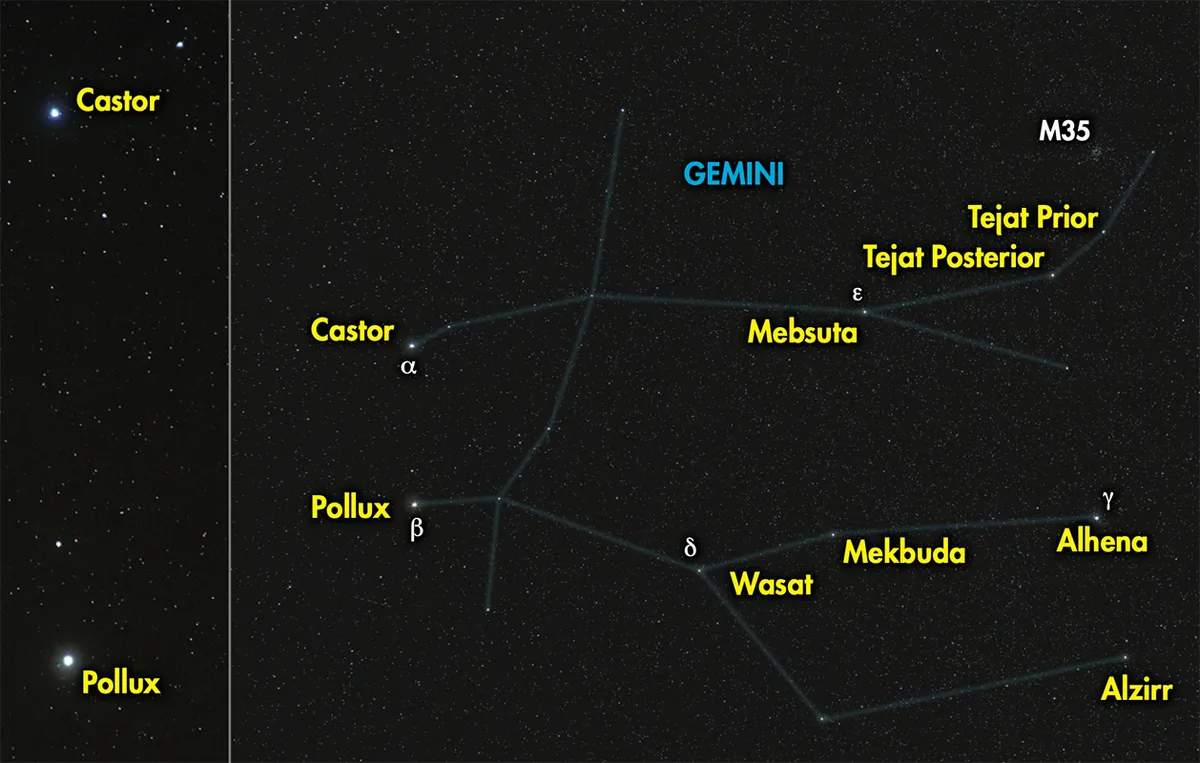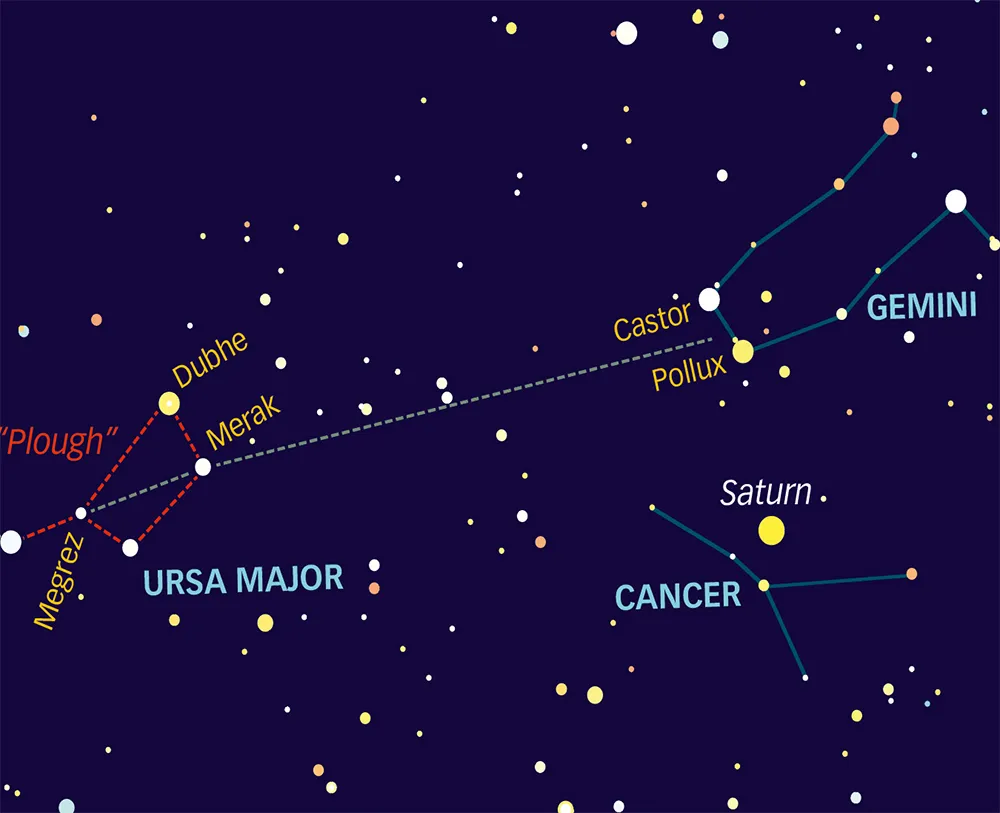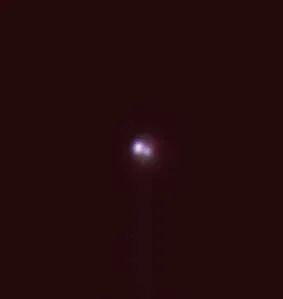The stars Castor and Pollux provide the heads of the twins Castor and Pollux, who together form the constellation of Gemini.
Castor lies at a distance of 51 lightyears while Pollux is closer at 33.8 lightyears.
Exploring Gemini? Take a look at star Alhena

On first appearance Castor and Pollux look fairly similar. It’s only on close inspection that it’s obvious that Pollux is brighter and shows a more orange-hued colour than its mythological twin.
In this guide we'll take a look at these two wonderful stars and reveal some facts to ponder while you observe them.

How to find stars Castor and Pollux
A good way of locating stars Castor and Pollux is to draw an imaginary line from star Rigel at the bottom right of the constellation Orion, through Betelgeuse at the top left, and continue until you find two prominent stars sitting close to one another.
You can also find Castor and Pollux by finding the Plough asterism and drawing a line from the handles of the Plough through the right star in its base, and continuing on.

Castor
Castor (Alpha (α) Geminorum) is one of the two Twin stars in Gemini, the other being Pollux (Beta (β) Geminorum).
It is the most northern of the pair and its twin status is mythological rather than physical – Castor being the mortal twin of immortal Pollux in legend.
Visually, Castor is dimmer and more yellow than orange Pollux.
What looks like a single star to the naked eye is in fact a complex multiple star.
With a magnification of 100x, a 3-inch or larger scope should split Castor into two similar-looking stars, one mag. +1.9 (Castor A) and the other mag. +3.0 (Castor B).
The separation has increased from 2 arcseconds in 1970 to 6 arcseconds today.
Their orbital period is 445 years, the orbital plane being tilted to our line of sight by 25°.
A third companion, Castor C, appears 1.2 arcminutes to the south, and although it’s much dimmer at mag. +9.1 it remains an easy target for small telescopes.

Each of the three components is a spectroscopic binary, a gravitationally bound pair so close that we can only determine its true nature by spectroscopy.
The total star count in the Castor system is six. The average distance between Castor A and B is 104 AU, varying between 71 and 138 AU.
The main components of A and B are 37 and 13 times more luminous than our Sun, and 2.4 and 1.9 solar masses respectively.
The close, spectroscopic companions are likely to each be half as massive as the Sun.
Castor C is orientated to Earth such that its light is eclipsed by its two companions. This makes it an eclipsing spectroscopic binary.
Also known by the variable star name YY Geminorum, it’s comprised of two red dwarfs with an orbital period of 19.54 hours.
Are you an educator or just a huge Castor fan?! Download this NASA Castor poster.
Pollux
Pollux is an old giant star, the closest star of this type to our own Sun. It’s around twice as massive as the Sun and about nine times its radius.
Despite its beta status, mag. +1.2 Pollux (Beta (β) Geminorum) is the brightest star in Gemini and the 17th brightest star in the night sky.
It is linked to mag. +1.6 Castor (Alpha (α) Geminorum) through mythology rather than any physical association.
It is known to have a gas planet in orbit around it with an estimated mass of 2.3 Jupiters.
Known as Pollux b, it has a nearly circular orbit of radius 1.64 AU, taking 1.6 years to complete one circuit around Pollux.
The IAU’s official name for Pollux b is Thestias, bestowed on it by public nomination in 2015.
Pollux has a spectral type of K0 III. The K0 part describes its position within the Morgan-Keenan spectral classification system.
This is an important position because Pollux is regarded as one of the system’s ‘anchor’ stars: a star that has a key spectral type which hasn’t changed over the years. The ‘III’ identifies Pollux as a normal giant.
Pollux has a weak X-ray emission similar to that of our Sun.
Its magnetic field is particularly weak, with a strength measured below 1 Gauss, one of the weakest magnetic fields ever detected around a star.
The colour difference between Castor and Pollux is obvious and an interesting subject to reveal photographically.
A particularly good way to do this is to capture both stars in one frame at long exposure so that they trail. This really emphasises their difference.

